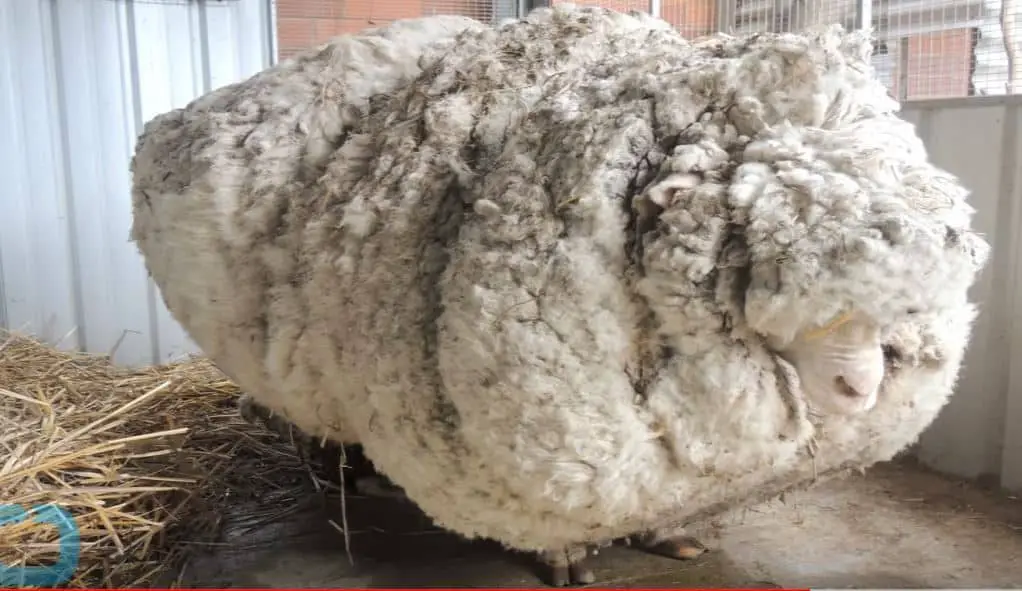Do All Sheep Need to be Sheared
Do All Sheep Need to be Sheared – No, there are a few Breeds that do not need to be shorn. They are called Haired Sheep. They have been Bred for Weed Control, For Meat and Milk Production. Many Times they are Bred for Hot Climates. They are also Bred to be able to grow and thrive on Poor and scarce Feed. Areas that have limited water.
Because their hair does not continue to grow, they stay a lot cooler. One of the dangers for a sheep that has a large amount of wool can easily overheat and die.
That is one of the reasons most sheep are sheared in the spring it makes
- Lambing is easier with short wool
- Sheep are shorn and are cooler in the summer
- Prevents Bug infestation
- Feces and Dirt getting stuck in long wool.
- In the Winter their wool is longer giving them warmth as the weather gets colder.
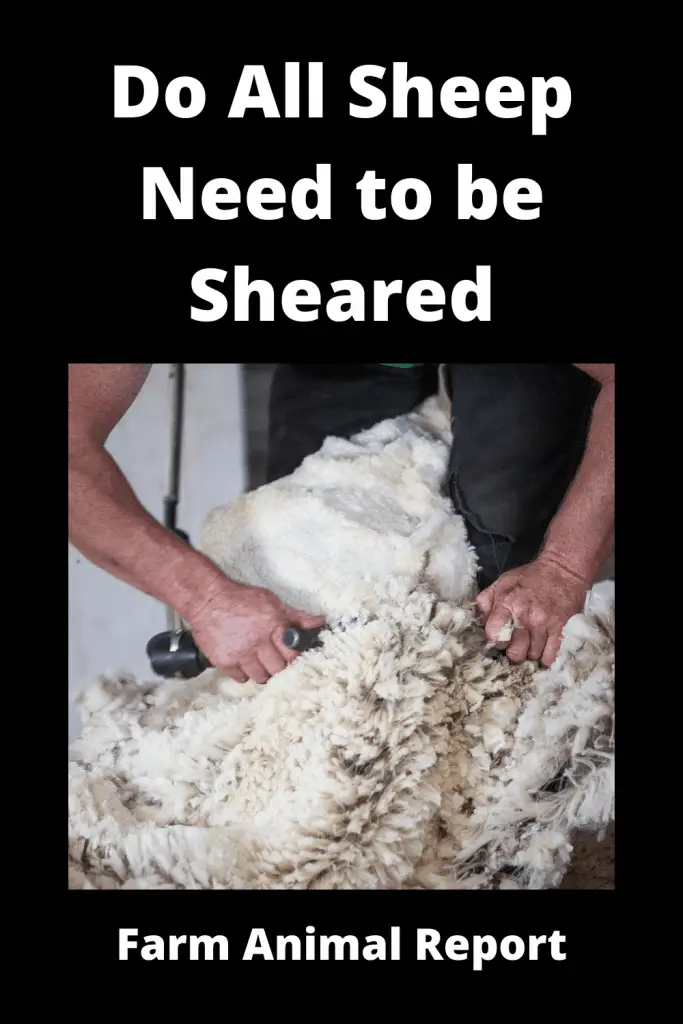
Sheep Breeds that Need Sheared
There are more than 1000 different Breeds and combinations of Sheep. Over 500 of them are Raised for Wool Production. We are going to give a list of Some here of the Big Wool Producers
- Merino
- Lincoln
- Southdown
- Corriedale
- Rexal
- Targhee
- Shetland
Sheep Wool Grows and these Breeds of Sheep do not Shed so their wool continues to Grow. Some Breeds are bred for their Wool. Wool is measured by its quality. Its color, its length, and the Micron Thickness is Measured also
Some of the Breeds are so prolific in the amount of wool they produce, (How Fast it Grows) Normally you shear a sheep once a year, in the springs.
Some Produce that they need to be shorn twice a year.
When you look at Farmers that sell Rams and Ewes that have good Pedigree and lineage. You will see some of the figures on that individual sheep.
So you can get a good idea that if you purchase that sheep and Ram, the characteristics of the lambs you will produce.
Many Times a farmer will want to multiply the income that he gets from Raising Sheep. Sheep are Raised for Several Reasons The Big Ones are
- Meat Production – Total Commitment for the Sheep
- Wool Production – You can Shear a sheep over and over, it is a recurring source of Revenue
- Sheep Milking – This too is a renewing resource and milk sheep for years. The common Lifespan for a Sheep is 10 – 12 Years
- Weed and Shrub Control – Instead of manual grass cutting and chemical applications. Some Sheep Flock is allowed to trim Grasses – Example od Shropshire Sheep and Christmas, Fruit Trees.
| Wool Producing Countries | Percentage of Market 2017 |
|---|---|
| Australia | 6 % |
| China | 14 % |
| United States | 17 % |
| New Zealand | 2 % |
| UK | 3 % |
| Turkey | 3 % |
| Mongolia | 2 % |
| Argentina | 1 % |
| Urguay | 1 % |
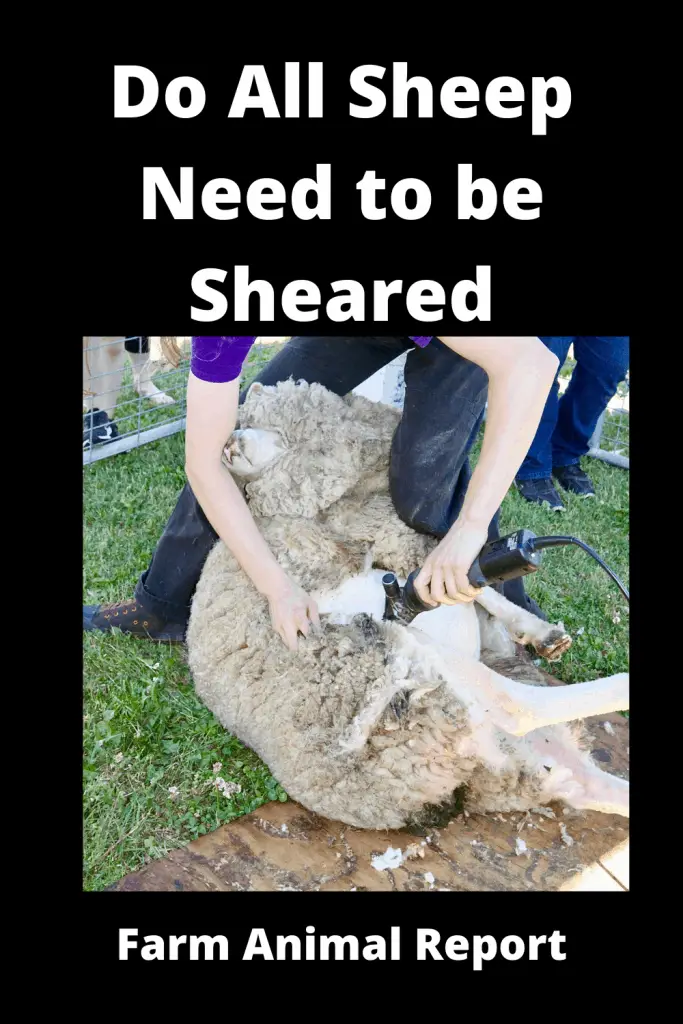
18 Sheep Breeds that do not Need to be Sheared – Haired Sheep
- Katahdins
- Dorper
- Blackbelly
- St. Croix
- Romanovs
- Blackhead Persian
- West African Dwarf
- Red Maasi
- Wiltshire Horn
- Royal White
- California Red
- Damara Sheep
- Pelibuey
- Africana Sheep
- Morada Nova
- Brazillian Somalia
- Uda
- Touabire
18 Breeds of Hair Sheep FAQ Table
| Hair Breeds of Sheep | Country Origin | Purpose of Breed | Use | Ewe Weight |
|---|---|---|---|---|
| Katahdins | Caribbean / Maine / Africa | To Graze Power lines / instead of Chemicals | Meat | 120 - 160 lbs |
| Dorper | South Africa | Thrive in Africa / Hot Climate | Meat / Fast Growing | 230 LBs |
| Blackbelly | America | Hot Climates | Meat | 150 LBs |
| St. Croix | Carribean | Came on Ships for Meat for sailors | Meat | 150 lbs |
| Romanovs | Russia | Primarily for Meat | Meat Wool - Double Coated | 110 lbs |
| Blackhead Persian | Africa / Somaila | Bred for High Quanity of Fat | Meat | 120 lbs |
| West African Dwarf | South / Central Africa | Meat | 55 lbs | |
| Red Maasi | East Africa | Bred for Hardiness and parasite Resistance | Meat | 77 Lbs |
| Wiltshire Horn | England | Do not suffer from Flystrike | Meat | 149 lbs |
| Royal White | United States / Texas | Bred for Tender Meat and Disease Resistants | Meat | 175 lbs |
| California Red | Not completely Hair sheep/ Combination of both/ Prod 2 lambs Yr | Meat | 140 lbs | |
| Damara | Egypt | Vigorous with fast growing / in extreme conditions | Meat | 110 lbs |
| Pelibuey | Cuba / Mexico | Tropical Sheep | Meat | 75 lbs |
| Africana | Columbia / Venezula | Meat | 110 lbs | |
| Morada | Brazil | Survive Scrub | Meat | 66 lbs |
| Brazillian Somaila | South Africa / Somali | Meat | ||
| Uda | Africa | Long Legged Sheep | Meat | 88 lbs |
| Touabire | Africa | Dairy / Meat | 77 lbs |
History of Hair Breeds
Most of the hair breeds originated in Africa. Some of the most resistant breeds were raised for dry arid conditions. Tropical areas and in the Caribbean islands.
Some of the Advantages of Hair sheep are several.
- The tendency to have higher production (Lambing Levels)
- Lambing rates of 150 – 200 %
- Very Good Mothers
- High Natural Resistance to Parasites ( Internal and External )
- Greater Tolerance for High Heat and Humidity
- Lambs have a high Survival Rate
- Good for Multi-animal Grazing
- Good Ability to clear brush
Some of the Disadvantages of Hair Sheep
- Not Good for Club Lamb Market
- Heavily Muscled, but usually not Pretty
- Not as Large as Wool Sheep
- Do Not do as well in Cold Climates
- Finish Meat carcasses resemble goat carcass
Hairless Sheep Breeds
There are no truly Hairless Breeds of Sheep. There are three types
- Wool bearing
- Hair Sheep – Unimproved
- Hair Sheep – Improved
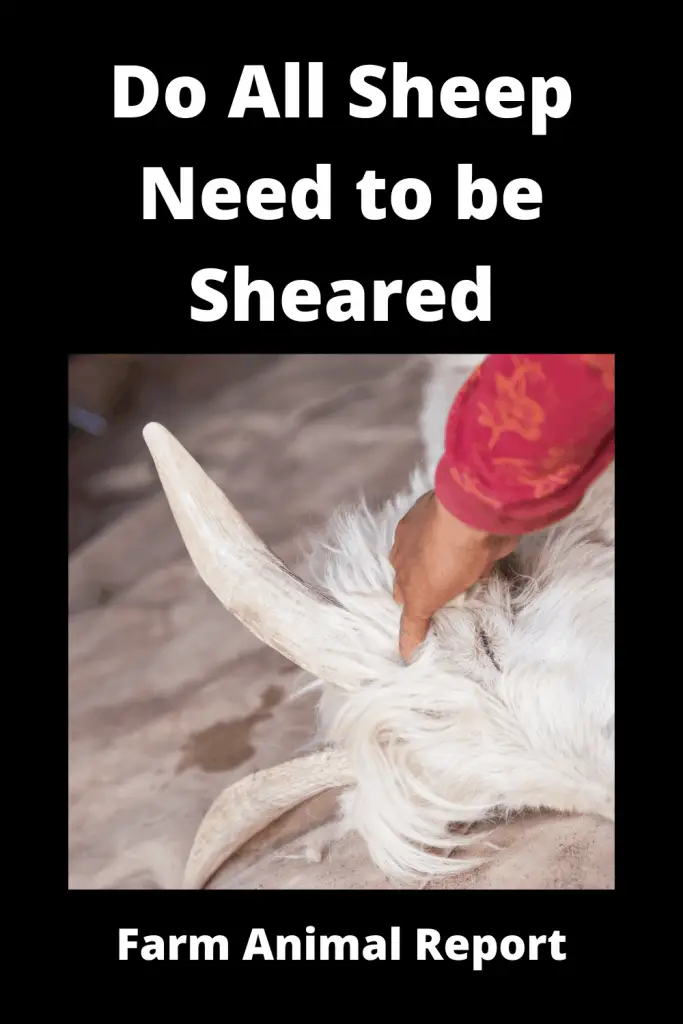
Sheep Hair Breeds
There are over 100 Million Hair Sheep Around the World. About 10% of the World’s Sheep population.
90% of that Population of Hair Sheep are in Africa and 10% are in Latin America and the Caribbean. These are concentrated in a lot of Hot climates.
There are two types of Haired Sheep . Haired sheep are like other animals. They Shed their Hair every Year.
Unimproved – Hair Sheep
Some of the Strength is their Reproductive Speed. They are very hearty, and they have been bred to be very parisite Resistant. They are very tolerant to heat, Some of the unimproved breeds are, Barbados Blackberry and St. Croix. Many of these Breeds are Bred for the harsh and in Hot and arid climates/ They are many times more muscular – than their wool-bearing cousins
Improved – Hair Sheep
Improved sheep category is sheep that have kind of middle of the road in their wool length. Pure hair and wool breeds. They are usually also meaty varieties.
Some of those Breeds in the Improved categories Katahdin and Dorper Breeds. The improved Breeds have been bred to grow faster and produce meaty bodies. Maintaining their Good qualities and trying to increase their meat growing properties.
Do Sheep Like Being Sheared
The Shearing
Most Sheep Farmers are in agreement on this. The process of Shearing is stressful for the sheep. They have to be gathered and forced into waiting pens. When it comes time for shearing the sheep are manhandled by the Shearer and the noise of the shears scares them.
They have to be restrained by force holding them still to get their haircut. It is traumatic knowing what is coming. So if they could flee they would. Once their time comes they are sheared by force. Held and restrained so the Shearer can safely remove the fleece from the Sheep
See Our Extensive Guide – 16 Ways to Make Money Sheep Farming
Shearing – Post Shearing
After the Haircut, the Sheep do feel Better and Lighter and Cleaners. For 30 Years we raised Bichon Frise Dogs. We gave them a bath every Saturday. Had to catch them, while the other two went to hide. But after the Bath was over. They felt immensely better . Cool Clean and Fresh.
Same for the Sheep the Heaviness of the Wool, The thickness of it, Bugs that share it with them.
Is Shearing of Wool Harmful to Sheep
No, Shearing the wool from a Sheep is not harmful to the sheep. Sheep naturally do not shed so their wool continues to grow. If a sheep does not get a periodic haircut it can be life=threateneing to the sheep. They can overheat because of the great insulating properties that wool has if they are overloaded with it
Sheep Wool can grow very quickly long wool breeds can grow at the Rate of 1″ per Month
Sheep Shearing Cuts
It is often that sheep get cuts when they are being Shaved. Just like a person when shaving cuts can happen if you get too close. Sheep are not shorn with a razor, but they are sheared with Electric Sheep Shears.
- Inexperience of Shearer
- Folds of Skin
- Time Rushing – Many times paid per Sheep
- Poor Equipment
- Sheep Jerks
Sheep Shears
Some Large Sheep Shearing Operations shear 3,000 sheep per day.
The Process Sheep Shearing is here
- Sheep Wool is removed – World record is 37.9 Seconds – Normally a Sheep Shearer is paid on a per sheep basis. Some Shearers can do approx 200 Sheep per day. Normal 2-3 Minutes per sheep
- Fleece is thrown on sorted Table
- Skirt – Roll – Class the Fleece
- Place it in the Wool Bin
- Press and Store the Wool for Transport
How do Sheep Shed their Wool Naturally
Wool Bearing Sheep do not shed. So they have no way naturally to remove their Wool Fleece. The Haie Brees of Sheep shed like other animals shed their hair once a year.
Wild Sheep
Sheep Breeds that are in the Wild have short Hair. The Bighorn Sheep are a wild breed. They do not have wool – their hair is more similar to that of a deer. So in the wild, it is not a problem to the Bighorn Sheep
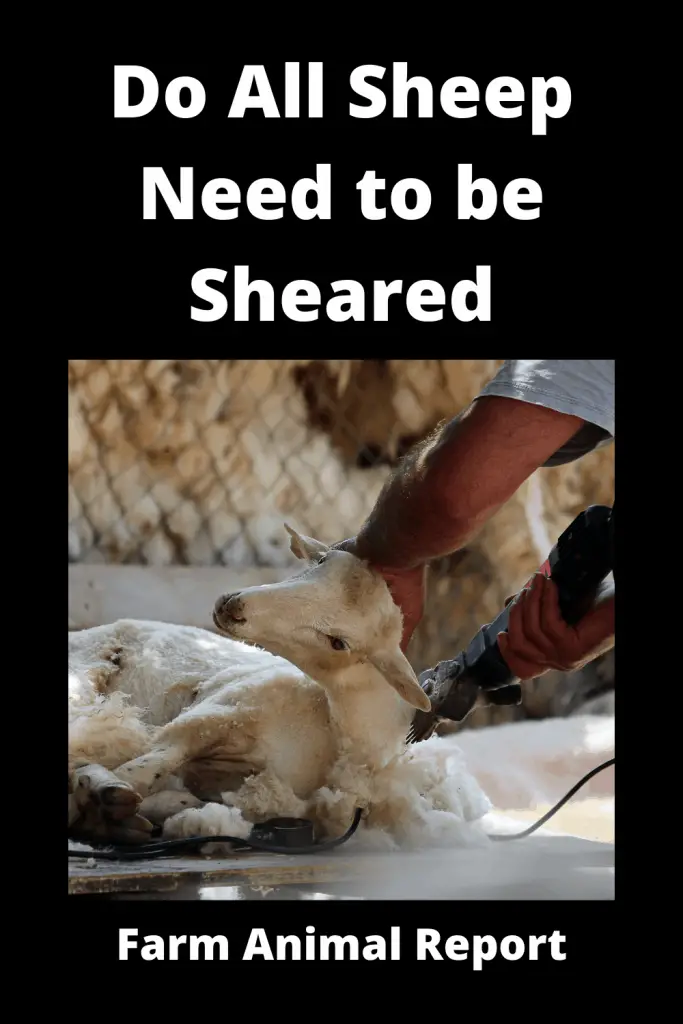
Domesticated Sheep
Domesticated sheep have been bred and domesticated for Farming. They have been extensively bred by artificial Selection to produce more and more wool.
Which Sheep Shed their Wool
Sheep are not able to shed their wool. They are not physically able to shed. Only the Hair Sheep Shed hair like regular animals. Any of the Breeds that have been bred for wool are not able to shed their wool.
Can sheep survive without being Sheared?
Sheep that are wool Breeds cannot survive without being sheared. Their wool will continue to grow. Calculating at 1″ per month growth rate – 12 months would be 12 inches. Some of the Life Threatened Complications for sheep are
- Overheating
- Insect Infections
- Feces and dirt accumulation
- Predators – much easier to be run down
- Caught in Brush
- Its Health will slowly begin to deteriorate
Sheep Overgrown Wool
There have been many examples of og Sheep with Overgrown. The largest recorded is 89 Lbs of wool wich was Half of Chris’s Body Weight. Enough to make 30 Sweaters. He was 5 – 6 Years old and never been Sheared.
What is the Biggest Sheep in the World
The American Sheep Industry Association says that the Largest Breed of Sheep are the Suffolk Breed. Rams can Reach 400 lbs, and Ewes can Reach 300 lbs.
Suffolk are a British Breed of Sheep with a long History. This Breed was Bred for Large Meat Capabilities. They were first known as Black Faces. They also date back to 1797
Sheep that Lose their Wool
Wool Bearing Sheep do not naturally lose their wool, but there are several reasons that a Sheep will lose its wool. They usually point to some underlying Health Issues. Some can be hidden because of their wool coat
- Mange – Insect, can cause Wool Loss – Tiny Mites burrow down in the skin, sometimes at the base of the hair follicles themselves and cause the fibers to fall out – Mange is also called Scabies – Sheep can also dig them trying to get the mites out
- Ringworm – Fungus – It is a fungus that sheep can get and cause irritation and scaling skin. Hair can come out in affected areas. Also called Club Lamb Fungus –
- Lice – Insect – Infestation these little guys suck the blood of the sheep. Their irritation will cause the sheep to try to remove them, damaging the wool
- Scrapie – Disease that causes sheep to scratch – which causes bald spots
- Sulfur Deficiencies
- Zinc Deficiencies
Raising Hair Sheep – for Meat
Here are some Basics for starting Raising Hair Sheep
- Perimeter Fencing
- Guard Animals – Dogs – Donkeys – Horses
- Good Clean Water Source
- Manage and rotate you Pastures
- Bring in Sheep at Night – Help in Predator Protection
- Raising Parisite Resistant Sheep
For a Detailed Understanding this Video is great
Diseases Hair Sheep – Health Issues
Bacterial Infections
- Brucellosis – malta Fever
- Footrot – rots away the animal’s foot
- Listeriosis
- Tularemia – rabbit Fever
- Salmonellosis – Diahreah – Cramps
Fungal Diseases
- Candidiasis – Thrush – Yeast infections
- Cryptococcosis – Pulmonary and Respiratory
- Facial eczema – infects the liver causing facial blemishes
- Sporotrichosis – through cuts in the skin or through breathing
Parasites
- Protozoa
- Flatworms
- Tape Worms
- Round Worms
Insect Problems
- Ticks
- Chewing Lice
- Sucking Lice
- Mites
- Flies
- Misquotes
- Fly Strike


